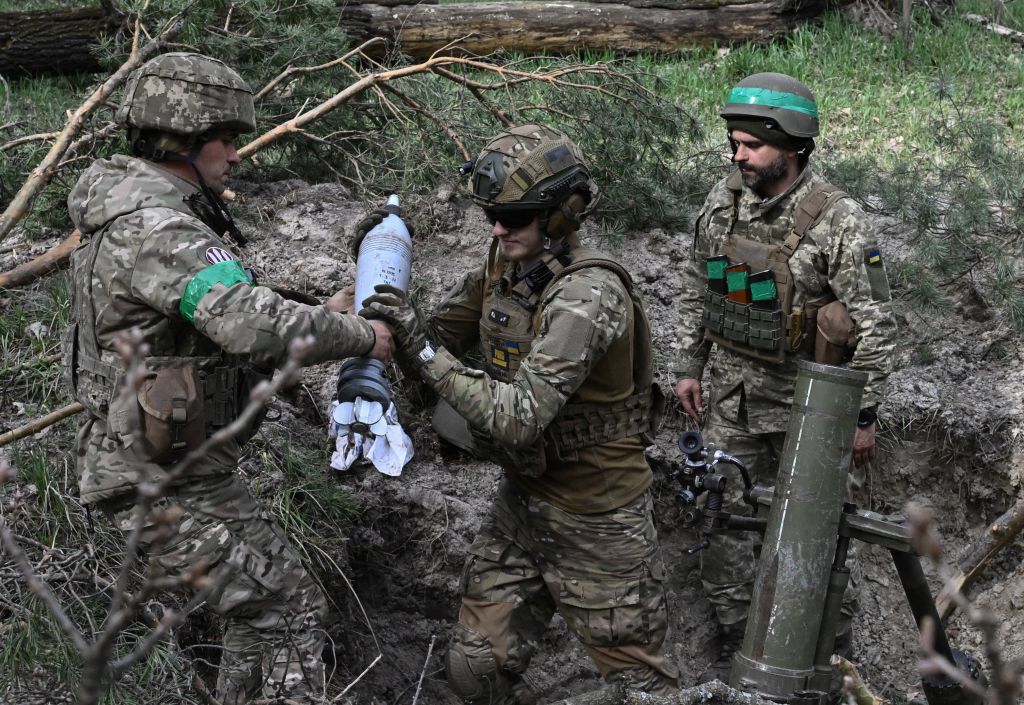
Predicting the course of a war is never simple—but the leak of U.S. defense documents made forecasting the Ukrainian war even more complicated. The chaos triggered by the leak even led Ukrainian leaders to shake up their battlefield plans, according to CNN.
But spring has sprung, and on the battlefields of Ukraine, that means it may soon be time for a long-awaited counter-offensive. While Ukrainian President Volodymyr Zelensky indicated that his country needs weapons before it can attack, other leaders have suggested it’s nearing time to strike—especially as a weak Russian advance has depleted Russian forces.
George Barros, an analyst on the Russia and Ukraine portfolio at the Institute for the Study of War, says that his organization makes a point of not forecasting what will happen next, in part, he says, to avoid interfering in the conflict. But in an interview with TIME, he walked through the geography and history of the conflict—which may hint at what comes next.
Read More: The Mysteries of the Biggest Intel Leak in a Decade
More from TIME
Russia fortified a vulnerable region
Ukrainian military leaders have suggested that the counter-offensive may press south. In February, Vadym Skibitskiy, the deputy head of the military’s intelligence directorate, said Ukraine is planning to “drive a wedge into the Russian front in the south—between Crimea and the Russian mainland.”
Russia appears to be particularly worried about one scenario, says Barros: the risk that Ukraine will attack Zaporizhzhia oblast. Satellite imagery shows that Russian forces fortified the area to protect logistical lines, including obstacles designed to block tanks.
This region is particularly important to Ukraine for several major reasons. For one, large numbers of people live in the area, including Melitopol and Tokmak. The region is also along the Sea of Azov, and its ports are important for Ukraine to maintain foreign trade.
The region is also essential to the Russian military because it’s the major plot of land connecting southern Ukrainian territories occupied by Russia to the mainland, including Crimea. The roads running through the territory are the major supply routes for the thousands of troops stationed in the south. If Ukraine took it back, says Barros, it would create “the worst bottleneck ever.” Without it, Russia would have to rely on a single bridge that spans between Crimea and Krasnodar Krai, which Barros says is still in depleted condition since Ukraine attacked it in October.
But Ukraine could exploit other weaknesses
Skibitskiy has also suggested that Ukraine could strike at a familiar battleground: Bakhmut. In an interview with CNN in March, he noted that the Russians are “losing significant forces [in Bakhmut] and are running out of energy.”
“Very soon, we will take advantage of this opportunity, as we did in the past near Kyiv, Kharkiv, Balakliya and Kupyansk,” he added.
According to Barros, Russian forces in the area are “degraded” after a particularly tough six months of fighting without an operational pause around Bakhmut. A month ago, western officials estimated that up to 30,000 Russian troops were killed and wounded in the battle, the BBC reported on March 7. Back in late 2022, he notes, Russia’s attacks in the area slowed down, and Russia needed to bring in some of its elite air force troops to maintain its advance.
“The classical example of a counter-offensive would be to exploit the local conditions of your adversaries’ state of disrepair and exhaustion, which I think is characteristic of where the Russians in Bakhmut are now,” says Barros.
Read More: Why Experts Are Growing Alarmed About Ukraine’s Air Defenses
Ukraine has shown it’s unpredictable
Despite these indications, however, Ukraine has also shown that it can use information it’s sharing with the world to its advantage on the battlefield.
Last summer, for instance, Ukraine loudly telegraphed its plans to attack in the south, with Zelensky declaring in July that Ukraine planned to retake the city of Kherson by September. The Russians, in response, re-deployed many of their troops to the south, which led to the “hollowing out of the north and making it ripe for exploitation.”
Instead, however, Ukraine conducted two simultaneous but staggered counter-offensives, attacking both in the south and in the north, in two attacks that were “mutually reinforcing,” says Barros. Ultimately, Ukraine “forced the Russians to pick from a buffet of bad decisions” and seized territory in both regions.
“One of the key reasons why the Ukrainians were successful in the North was because they managed to successfully play game on the Russians,” says Barros.
More Must-Reads from TIME
- Where Trump 2.0 Will Differ From 1.0
- How Elon Musk Became a Kingmaker
- The Power—And Limits—of Peer Support
- The 100 Must-Read Books of 2024
- Column: If Optimism Feels Ridiculous Now, Try Hope
- The Future of Climate Action Is Trade Policy
- FX’s Say Nothing Is the Must-Watch Political Thriller of 2024
- Merle Bombardieri Is Helping People Make the Baby Decision
Contact us at [email protected]